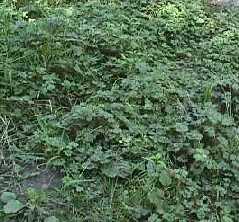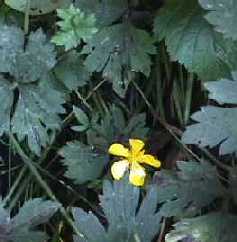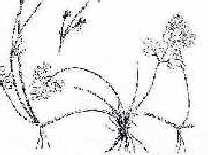


General Species Description
- A common, creeping stonloniferous perenial with shoots to 50 cm. Native to Eurasia, common invasive plant in moist gardens, meadows.
Leaves
- Leaves are compound and divided into 3-lobed, triangular leaflets which are often densely hairy. They are dark green when mature with coarsely , uneven toothed margins. Leaves often have irregular, pale silver or light colored blotches on the surface.
Inflorescence/Flowers
- The fower has five petals which form a shiny, waxy yellow notched cup, 10-35 mm across borne on creeping flower stalks. Blooms May to early August.
Fruits
- There are 20-50 seeds per fruit. They are slightly hairy, about 2-3 mm long, and aree rounded with short curved beak.
Habitat
- R. repens is a common inhabitant of moist to wet disturbed areas. Easily invades wet meadows, roadside ditches, young alder forests, and is a persistent invasive in moist gardens.
Range
- Very common in the Pacific northwest and east to the Atlantic coast. It is present in all western Washington and Northwestern Oregon counties.
Similar Species
- Sometimes confused with Geum macrophyllum (largeleaf avens) because of bright yellow flowers, basal rosette of leaves, and similar wet to moist habitat. However, avens has leaflets all along the stalk and no silver markings on the leaves, in addition, the flowers of avens are not shiny or glossy like the butter cup, and the seeds are found in ball-shaped fruits with s-shaped hooks. R. acris (tall buttercup) has palmately 5-cleft leaves without silver spots. Vegetatively R. repens could be mistaken for water parsley, Oenanthe sarmentosa, but the parsley leaves are more dissected like carrot leaves, and the parsley flowers are arranged in umbels.
Ecological Value
- Many ranunculus species, including this one, contain a toxin which may cause skin blisters, and if ingested can cause abdominal pain. They are generally unpalatable to livestock.
Human Value
- It is generally invasive, mat-forming species, and crowds out other plants, but may have ground cover and stabilizing values. Native American have used some species of butter cup to poison arrow tips but probably not this one since it is native to Eurasia.
References
- Cooke, S.S., ed. 1997. A Field Guide to the Common Wetland Plants of Western Washington & Northwesten Oregon. Seattle Audubon Society and Washington Native Plant Society. Seattle Audubon society, Seattle, WA, 417 pp.
Hitchcock, C.L. and A. Cronquist. 1973. Flora of the Pacific Northwest. University of Washington Press, Seattle, WA, 730 pp.
This page was created by: Pete Catching, August 2000
Return to Northwest Oregon Wetland Plants Project